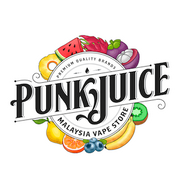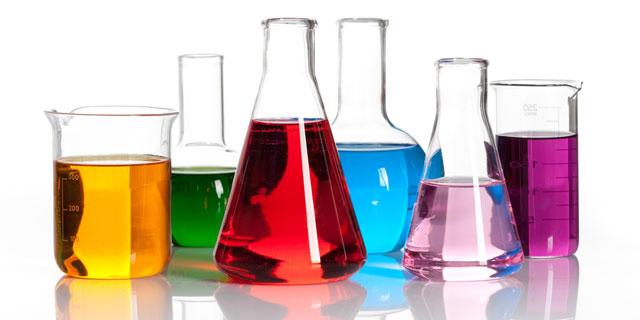E-juice, also known as e-liquid is the primary material used for vaporisers. It consists of a propylene glycol (PG) and vegetable glycerin (VG) base, flavouring and can be made with or without nicotine. Due to vapings increasing popularity, many vape enthusiasts have been creative with their e-juice by customising their own mixes. This allows them to experiment with taste, as well as its nicotine content. -
The idea of a Do-It-Yourself e-juice may seem daunting if you’re a beginner, rest assured that with proper handling, sufficient research, cautiousness and a little bit of dabbling in chemistry, your ideal e-juice can result as a rewarding DIY project. If you are considering the DIY route, it is always helpful to join a vaping community that can assist you in your endeavours.
There are a few advantages of making your own juice, because you are personally overlooking production, you can decide on the content, flavours and nicotine percentage that goes into your juice. (However, it is recommended that you start with lower levels of nicotine if you’re a beginner). Cost is also another advantage, as you may save yourself some cash in the long run (depending on the amount of juice you are producing).
Due to its experimental nature, the process of making your own juice will most likely begin as a trial and error effort. You should expect the initial production cost to be inconsistent, until you are certain of the amount of ingredients & items needed in producing your desired e-juice.
Don’t worry, this article hopes to clarify some doubts and questions regarding the process of making your own e-juice.
A GUIDE TO DIY E-JUICE
Firstly, before you begin, make sure you have a secure work area. This work area should only be accessible by you. No children or pets should gain access to your work area (especially if you are working with nicotine). You must practice caution when handling liquid nicotine. Do not ingest and always wear protective gear such as disposable gloves and face shields when handling. If you are unsure of handling nicotine, it is always best to consult a chemist or an expert in the vaping community to assist you.
After you have secured a work area, you’ll need equipment such as:
Plastic bottles
If you’re a beginner, plastic bottles are the best solution. They are affordable and don’t require much initial starting cost. Clean storage equipment is vital in preserving the flavour of your e-juice. A reusable, hard to clean container puts the flavour of the e-juice at risk, as it can be contaminated with residue from your previous mixing/storage experiments.
Syringes
Syringes with no tips (that can contain 1, 5 and 10 ml of liquid) are handy, when wanting to take accurate measurements of the liquids involved when making e-juice. The process of combining ingredients may be a little tricky, as even the slightest difference in drop measurement can cause a huge effect on the end result of your e-juice.
Always mark syringes and assign individual syringes to each ingredient. Through these methods you can be assured that the risk of compromising the taste of your e-juice is minimised.
Napkins, surface cleaners & coverings
It is always best to work in a clean environment, especially when you’re working with a variety of liquids. Even to the seasoned professional, spillages and accidents are bound to happen in the work area. It’s best to have napkins and additional surface coverings prepared before attempting your project.
Gloves & face shields
While spilling some e-juice on your skin can be cleaned off by simply washing your hands. It is strongly advised that you wear gloves & face shields if your mix contains medium to high doses of liquid nicotine. Nicotine is easily absorbed by the body. Frequent unprotected contact may range, from mild cases such as skin rashes and nausea, to much severe cases such as blindness and possibly death. it is always best to take extra precautionary steps, and have as little direct contact when handling batches of highly concentrated liquid nicotine.
Components and making your own e-juice.
There are four ingredients to make e-juice, but the two major ingredients are vegetable glycerin (VG) and propylene glycol (PG). These two ingredients act as a base to supplement flavour and nicotine.
Essentially, you can start vaping your e-juice by mixing the PG/VG base and flavoring without any nicotine, but there are many variables you have to consider when mixing these ingredients. Both ingredients have different characteristics and will affect the end result of your juice. As a reference, check out the labels of other e-juice brands to get an idea of their PG/VG ratios.
Below is a step by step process of preparing and combing all the ingredients to make an e-juice:
Preparing nicotine
If you’re a beginner working with nicotine, it is advised to pick a strength between 8mg to 24mg.
(This is a likeness comparison between nicotine content in e-juice to tobacco cigarettes, starting from 8mg being ultra-light to 24mg being the strongest).
Since nicotine intensity is measured in milligrams, you’ll have to calculate a volume ratio of nicotine to the overall volume of e-liquid to achieve your desired percentage. There are many e-liquid calculators/recipes available online that can be used as guides. Determining the desired percentage is a subjective trial & error effort. It all depends on experimentation and the desired taste of the individual.
Preparing flavours
This step is vital in determining the end result of your e-juice. You can experiment with as many flavours as you like. However, it is recommended that you start with one flavour and then move on to multiple. It is better to have a great tasting e-juice with the right amount of flavour, than a ruined batch with too much added flavour. A useful tip to note, never add more flavouring agent than 10% of the total volume of the end product.
Preparing the base of your eliquid
As mentioned above, the two major ingredients for all e-liquids consists of either VG, PG or a 50/50 ratio of both combined. Both ingredients vary in terms of carrying flavour, liquid viscosity & the thickness of vapor produced. Below is a comparison of both ingredients.
|
Propylene Glycol (PG) |
Vegetable Glycerin (VG) |
|
Thin, runny consistency. Due to its neutrality and fluidity, it is least likely to cause clogging, produces less vapor and carries flavour well. It is the more popular choice amongst e-juice makers. |
Thicker consistency. VG has a sweet aftertaste that could mask-out flavour intensity while producing thicker vapor clouds. It does not absorb quickly which may require more in-depth cleaning & maintenance of your vaporiser. |
|
An alcohol based liquid that gives a more intense throat hit. It is a popular choice amongst tobacco users. The FDA as well as the World Health Organization has classified PG to be “generally considered as safe”. PG is a great choice for vaping due to its low toxicity rates and being a great solvent makes it highly usable in a variety of applications such as in the manufacturing of iced tea, toothpaste, salad dressings, cake frosting and other consumables. |
A plant based liquid that gives a less intense throat hit as compared to PG. However, chances of a phlegm build up is possible from high VG based usage. |
Generally speaking, a higher level of PG - say 30% to 50% will improve the overall flavor of the eliquid (as the flavor is not masked by the VG), gives a stronger throat hit and make the overall liquid thinner, which improves the wicking of the eliquid to your cotton/coils.
Mixing & steeping
Once you’ve finalised your e-juice mix, mix it in a plastic bottle & shake it. High VG based e-juices are very thick and may require more vigorous shaking in order to mix the ingredients properly. The last (though not compulsory) process in completing your e-juice is steeping, though timing and methods are subjective. Most e-juice will taste much better after it has been aged for some period of time. Just leave your prepared e-juice to sit in a cool, dark place. There is no set period of time to define how long an e-juice should be steeped although as a general guide, fruit flavored juices need much less steeping compared to creamy flavored juices.
We hope that this article has provided you some basic insight on how to make e-juice. Have fun, be patient and experiment until you’ve achieved your ideal mix.
References:
Poulsen, T. (2015, August 10). How to Make Vape Juice. Retrieved from
https://www.vapingdaily.com/what-is-vaping/how-to-make-vape-juice/

